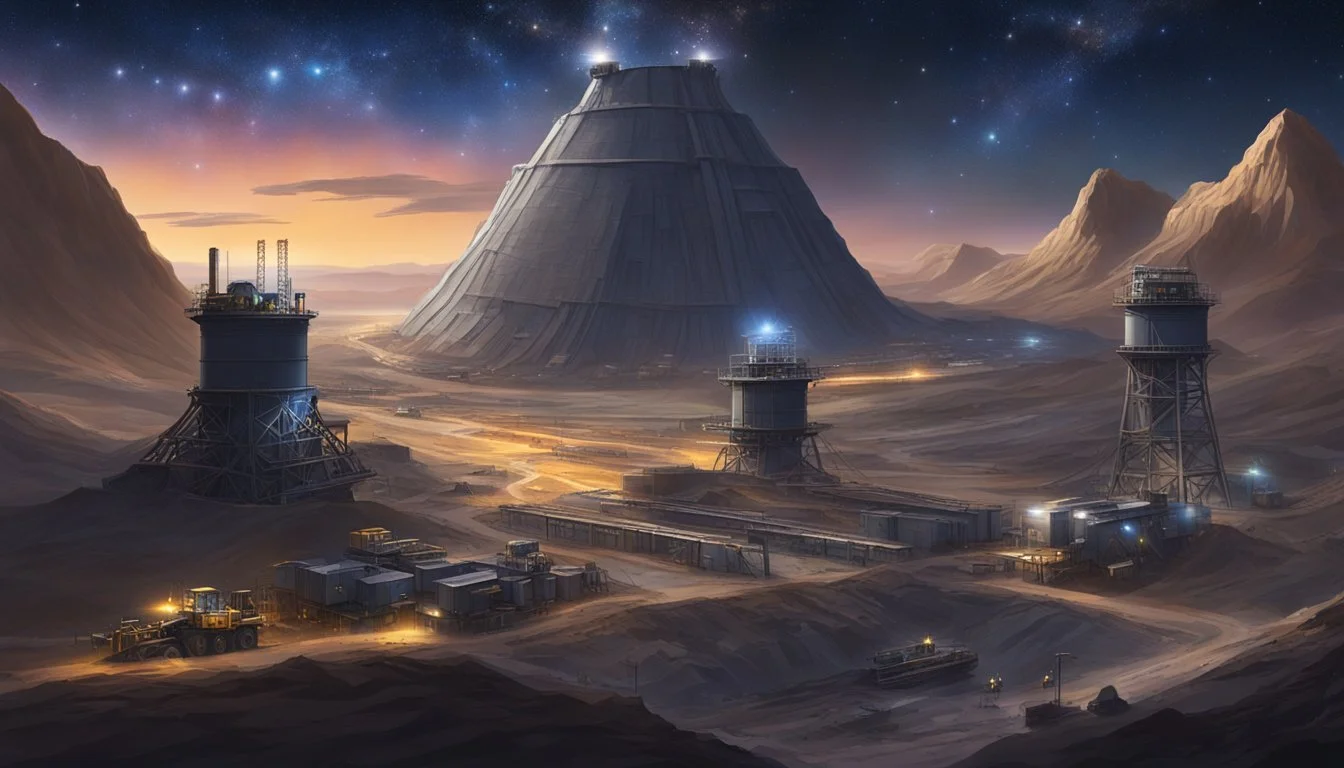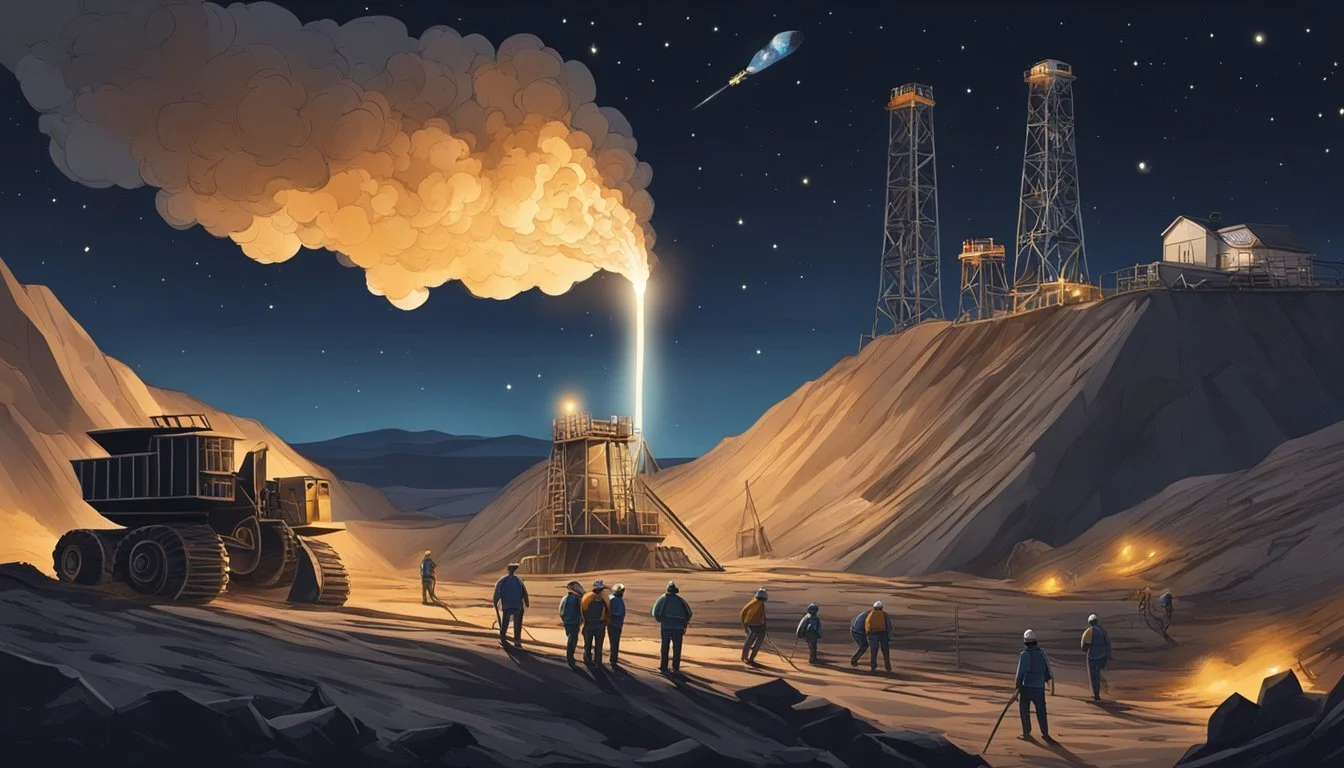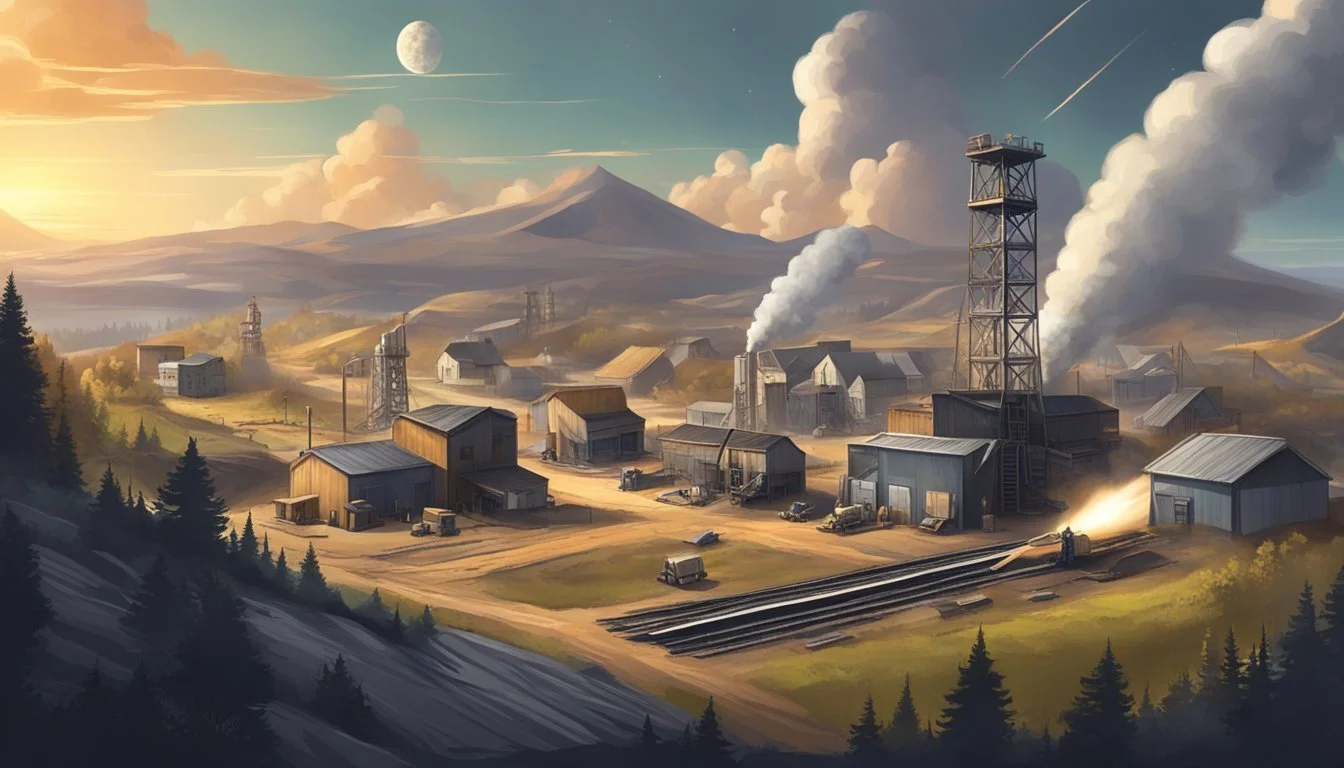From Coal Mines to Cosmos: The Real Homer Hickam Story
Rocket Boy's Journey to NASA
Homer Hickam Jr.'s journey from a small coal mining town to the heights of NASA exemplifies the power of passion and perseverance. Born in Coalwood, West Virginia, Hickam grew up surrounded by the coal industry that dominated the local economy. His father, Homer Sr., worked as a mining engineer and superintendent, embodying the expected career path for many in the community.
Despite the prevailing expectation that he would follow in his father's footsteps, Hickam's interest in rocketry and space exploration set him on a different trajectory. Inspired by the launch of Sputnik, the first artificial satellite, young Homer began building and launching his own rockets with a group of friends. This hobby, initially met with resistance from his father, would ultimately propel Hickam beyond the confines of Coalwood.
Hickam's story, chronicled in his memoir "Rocket Boys" and later adapted into the film "October Sky," resonates with many as a tale of determination and the pursuit of dreams. His transformation from a coal miner's son to a NASA engineer and accomplished author demonstrates the impact of following one's passions, even when they diverge from societal expectations.
The Early Life of Homer Hickam
Homer Hickam's formative years were shaped by his upbringing in a coal mining town, a pivotal moment in space history, and his early educational experiences. These factors laid the foundation for his future achievements in rocketry and literature.
Childhood in Coalwood, West Virginia
Homer H. Hickam Jr. was born on February 19, 1943, in Coalwood, West Virginia. This small company town revolved around the coal mining industry. Homer's father, Homer Sr., worked as the mine superintendent, setting expectations for his son's future.
Coalwood's close-knit community and the omnipresence of coal mining shaped young Hickam's early worldview. The town's economy and social structure were deeply intertwined with the mining operations.
Despite the presumption that he would follow his father into the mines, Homer Jr. harbored different aspirations. His childhood experiences in Coalwood would later inspire his memoir "Rocket Boys."
The Impact of Sputnik on Young Hickam
On October 4, 1957, the Soviet Union launched Sputnik 1, the world's first artificial satellite. This event profoundly affected 14-year-old Homer Hickam.
Witnessing Sputnik's launch ignited Hickam's passion for rocketry and space exploration. It provided a glimpse of possibilities beyond the coal mines of West Virginia.
Inspired by this historic moment, Hickam and his friends formed the "Big Creek Missile Agency." They began building and launching their own rockets, earning the nickname "The Rocket Boys" from townspeople.
This newfound interest in rocketry set Hickam on a path diverging from the expected coal mining career, sparking a lifelong fascination with space and science.
Education Before Rocketry
Homer Hickam attended Big Creek High School in War, West Virginia, graduating in 1960. His high school years were crucial in developing his interests beyond the coal industry.
During this time, Hickam excelled in science and math classes. These subjects provided the foundation for his rocket-building experiments.
Hickam's teachers played a significant role in nurturing his curiosity and supporting his unconventional interests. They encouraged his pursuit of rocketry, despite it being an unusual hobby in a coal mining town.
The education Hickam received, both formal and through his rocket experiments, prepared him for future academic and professional success beyond the confines of Coalwood.
The Birth of a Dream
Homer Hickam's journey from a coal miner's son to NASA engineer began with a spark of inspiration and the support of a dedicated teacher. His passion for rocketry ignited during high school, setting him on a path that would change his life.
Forming the Big Creek Missile Agency
In 1957, the launch of Sputnik 1 captivated Homer Hickam and his friends in Coalwood, West Virginia. Inspired by this historic event, they formed the Big Creek Missile Agency. The group consisted of Hickam and five classmates who shared a fascination with rockets and space exploration.
Their initial attempts at rocketry were met with mixed results. Early launches often ended in explosions or misfires. Undeterred, the boys persevered, refining their designs and techniques with each attempt.
The agency's activities quickly gained attention in Coalwood. Some residents viewed their experiments with skepticism, while others offered encouragement and support.
Miss Riley's Role in Fostering Dreams
Freida Joy Riley, Hickam's science teacher at Big Creek High School, played a crucial role in nurturing his aspirations. She recognized the potential in Hickam and his friends, encouraging their pursuit of rocketry and scientific knowledge.
Miss Riley provided the boys with books on advanced mathematics and rocket science. Her unwavering belief in their abilities pushed them to excel academically and pursue their dreams despite the limitations of their coal mining town.
She helped the group enter science fairs, opening doors to opportunities beyond Coalwood. Miss Riley's support was instrumental in Hickam's journey from amateur rocketry enthusiast to NASA engineer.
Her impact on Hickam and his friends exemplifies the profound influence a dedicated teacher can have on students' lives and aspirations.
Trials in Coalwood
Homer Hickam's upbringing in Coalwood presented unique challenges that shaped his character and ambitions. His experiences in the small mining town tested his resolve and sparked his desire for a different future.
Family and Community Dynamics
Homer Hickam Sr., the mine superintendent, had a complex relationship with his son. He expected Homer Jr. to follow in his footsteps and work in the coal industry. This created tension within the family, as Homer Jr.'s interests diverged from his father's expectations.
Homer's mother, Elsie, supported her son's dreams and encouraged his pursuit of rocketry. This divide in parental support added stress to the family dynamic.
The tight-knit community of Coalwood played a significant role in Homer's life. Neighbors and friends often rallied around his rocket experiments, providing both encouragement and skepticism.
Interests Clashing with the Coal Mining Town Culture
Homer's passion for rocketry set him apart in Coalwood. His pursuit of scientific knowledge conflicted with the town's coal-centric culture. Many residents viewed his experiments as impractical or even dangerous.
The economic realities of Coalwood posed challenges. Resources for rocket materials were scarce, forcing Homer and his friends to be resourceful. They often repurposed mining equipment for their projects.
Homer's academic interests faced resistance from some teachers who prioritized practical skills over scientific pursuits. This attitude reflected the town's focus on preparing youth for mining careers.
Despite these obstacles, Homer's determination grew. Each setback fueled his resolve to prove that a coal miner's son could reach for the stars.
Rising Through the Ranks
Homer Hickam's journey from a coal miner's son to a NASA engineer was marked by his passion for rocketry and scientific innovation. His early experiments and success at national competitions set the stage for his future career.
Early Rocketry Experiments and Innovation
Hickam's fascination with rockets began in 1957 after the launch of Sputnik 1. He formed the Big Creek Missile Agency with his friends, conducting rocket experiments in their small town of Coalwood. The group faced numerous challenges, including limited resources and initial failures.
They persevered, improving their designs through trial and error. Their innovations included:
Using castor sets for more stable launches
Developing homemade propellants
Creating a launch control bunker for safety
These experiments caught the attention of their supportive teacher, Miss Riley, who encouraged their pursuits.
Achievements at the National Science Fair
Hickam's dedication to rocketry led to remarkable achievements at science fairs. His project on rocket design and propulsion earned him:
First place at the county science fair
Top honors at the state competition
The pinnacle of his early success came at the National Science Fair. There, Hickam's innovative rocket designs garnered significant attention. He won:
A gold medal in the propulsion category
A coveted college scholarship
These accomplishments opened doors for Hickam, paving the way for his future career in aerospace engineering. His success at the National Science Fair validated his passion and expertise in rocketry.
From Coal Mines to NASA
Homer Hickam's journey from a coal mining town to NASA was marked by determination and a passion for rocketry. His pursuit of education and engineering expertise paved the way for a remarkable career transition.
Educational Journey Post-High School
Homer Hickam attended Virginia Polytechnic Institute and State University (Virginia Tech) after graduating high school. He majored in industrial engineering, building on his fascination with rockets and space exploration. At Virginia Tech, Hickam honed his technical skills and expanded his knowledge of engineering principles.
During his college years, Hickam continued to pursue rocketry as a hobby. He participated in engineering projects and competitions, further developing his expertise in the field. Hickam's academic performance and extracurricular activities laid a strong foundation for his future career.
Joining NASA as an Engineer
After completing his degree, Homer Hickam served in the U.S. Army during the Vietnam War. Upon returning, he applied his engineering skills to the coal mining industry briefly before securing a position at NASA in 1981. Hickam started as an aerospace engineer at the Marshall Space Flight Center in Huntsville, Alabama.
At NASA, Hickam worked on various projects related to spacecraft design and propulsion systems. He contributed to the development of spacecraft for both crewed and uncrewed missions. Hickam's expertise in rocketry, cultivated since his youth, proved invaluable in his NASA career.
Hickam's responsibilities included:
Designing and testing propulsion systems
Analyzing spacecraft performance
Training astronauts on spacecraft systems
His journey from a coal miner's son to a NASA engineer exemplified the power of perseverance and following one's passion.
Memoir to Silver Screen
Homer Hickam's journey from aspiring rocket scientist to celebrated author and the subsequent adaptation of his memoir into a major motion picture captivated audiences worldwide. The transformation of his personal story from page to screen showcased the universal appeal of dreams, determination, and small-town America.
The Story behind Writing 'Rocket Boys'
Homer Hickam penned 'Rocket Boys' as a testament to his formative years in Coalwood, West Virginia. The memoir recounts his experiences as a teenager in the late 1950s, building rockets with his friends while living in a coal mining town. Hickam's vivid descriptions and heartfelt narrative struck a chord with readers, propelling the book to the top of the New York Times bestseller list.
The success of 'Rocket Boys' stemmed from its authentic portrayal of a young man's passion for science amidst the backdrop of a changing America. Hickam's writing captured the essence of small-town life, family dynamics, and the pursuit of seemingly impossible dreams.
Adaptation into the Film 'October Sky'
Universal Studios acquired the rights to 'Rocket Boys' and transformed it into the biographical film 'October Sky'. The movie, released in 1999, starred Jake Gyllenhaal as Homer Hickam. Director Joe Johnston brought Hickam's story to life, maintaining the memoir's core themes of perseverance and hope.
'October Sky' received critical acclaim for its faithful adaptation and heartwarming portrayal of Hickam's journey. The film's title, an anagram of 'Rocket Boys', cleverly tied into a pivotal moment in the story. It garnered praise for its performances, period accuracy, and inspirational message, introducing Hickam's story to an even wider audience.
Lasting Impact and Legacy
Homer Hickam's journey from a small coal mining town to NASA engineer and bestselling author has left an enduring mark on education and space exploration. His story continues to inspire countless individuals to pursue their dreams against all odds.
Influence on Education and Aerospace Aspirations
Hickam's memoir "Rocket Boys" sparked a renewed interest in science education across the United States. Schools nationwide incorporated the book into their curricula, using it to ignite students' passion for STEM fields. The story's adaptation into the film "October Sky" further amplified its reach, inspiring a new generation of engineers and scientists.
NASA embraced Hickam's narrative, recognizing its potential to attract young talent to the aerospace industry. The agency frequently invites him to speak at events, where he encourages students to consider careers in space exploration.
Hickam's legacy extends beyond his personal achievements. He established scholarship programs for aspiring scientists and engineers from his hometown, ensuring that future generations have opportunities he once dreamed of. His work continues to bridge the gap between rural America and the frontiers of space exploration.





